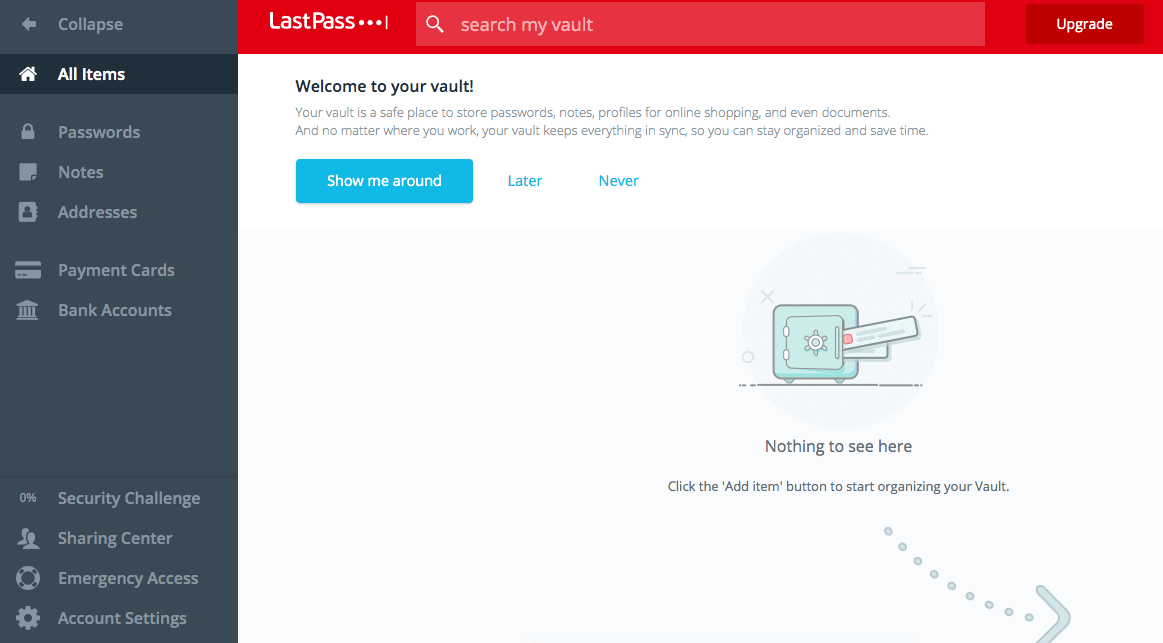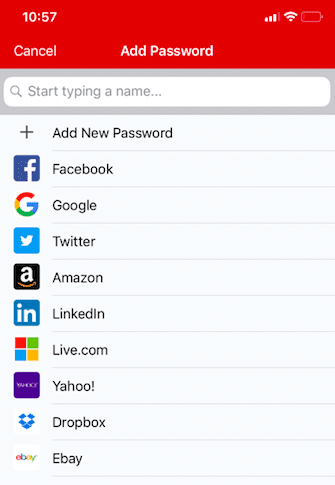If you, like millions of other people, use the same password for just about every application you use, then I’m sorry to break it to you, but one of these days, you’ll probably get hacked, if you aren’t already. Although you probably imagine a hacker as a hooded, geeky man sat behind a laptop breaking into accounts by guessing people’s favorite movies and lucky numbers, surprisingly, that’s not how it works. In fact, hackers specifically target vulnerable sites and access its customer database where they can easily find your details. But, we’re not here to scare you (that much), we’ve produced a guide on how to securely store and remember all your passwords. But, we don’t have tips to actually make your brain to memorize each and every one of your passwords. We’re talking about password managers which automatically store and remember them for you. These handy tools work across your devices and there’s plenty to choose from, be that paid or free. Here’s how to use these apps, and a list of them for whatever you need specifically.
The free option: LastPass
Credit: LastPass LastPass is a free password manager that generates strong passwords and safely stores them in its vault. It’s available on desktop and smart devices running Android and iOS. But you should know that starting March 16, 2021, LastPass has restricted free users to only one device type, i.e., they can only use their free account on desktops and laptops, or only on phones and tablets — but not a phone and a laptop. If you want to use both types of devices, you’ll need to pony up for the Premium plan at $3 a month. It’s worth noting that in 2015, LastPass was hacked. The password management site ensured a “vast majority” of users were safe, although personal data was accessed. But keep in mind that this was four years ago and there’s been no recorded suspicious activity on the tool. And for what it’s worth, plenty of people at TNW use this tool. So, here’s how to get started on desktop:
How to save all your passwords together
Once you’ve created your LastPass account, it’s time to finally get your life together and save all your passwords. So, here’s how to save your passwords: As you visit more sites, your LastPass account will gradually fill with login details and when you revisit these sites, LastPass will automatically fill in the details and log you in securely.
How to generate hacker-proof passwords
It’s now time to wave goodbye to “Password123!” for good. LastPass gives you the option to test and fix your weak passwords. Here’s how to do this:
Using LastPass on your phone
LastPass is available on iOS and Android for free, unless you opt for the paid version (we’ll get onto that soon). So, here’s how to manage your passwords on your phone:
You can also import all your saved passwords from your desktop LastPass account: LastPass also gives you the option to upgrade your account for $24 a year. Going premium will allow you to share passwords, Wi-Fi logins, and membership features with others. It also gives you better security with multifactor authentication options, and you’ll get priority support from the LastPass team. And in case you choose to switch services at some point, you can export your passwords from LastPass, and bring them into your preferred password manager.
1Password
Credit: 1password Although there’s various free password managers out there, sometimes it pays to have a premium paid account. Take 1Password for example. For $2.99 a month (or $4.99 a month for the family plan).
How to use 1Password on desktop
How to start saving passwords on 1Password
Once you’ve set up your account and chosen your preferred subscription type, it’s time to start backing up all your passwords. Similar to the steps outlined for LastPass, every time you visit a site that requires login authentication, save the details to 1Password. Here’s how to do this: As you visit more sites, your 1Password account will gradually fill with login details and when you revisit these sites, the password manager will automatically fill in the details and log you in securely.
Using 1Password on your mobile
As mentioned, 1Password is also available on iOS and Android smart devices for free — although you have to have a paid subscription to unlock all its features. Here’s how to manage your passwords via your phone: Saving passwords on your phone is pretty similar to the steps on desktop, and all passwords sync across devices once changes are made. Here’s how to save credentials using your mobile:
So now you’ve got an overview of two of the most popular password managers available. There are a bunch more free and paid options you should consider:
Totally free: Bitwarden
Bitwarden is completely free and open-source, and works on all mobile and desktop platforms. $10 a year nets you two-factor authentication and more file storage. If you don’t yet want to spend on password management and stay as secure as possible, we recommend using Bitwarden along with a 2FA app like Authy or Google Authenticator. Both are free (the former doesn’t cost you anything for up to 100 authentications a month, which is fine for most folks).
Need file storage too? Consider Keeper
Keeper is another well-known choice if you’re okay with a subscription plan. You can also add on more features like secure file storage and sharing, and alerts for when your breached accounts are being distributed on the dark web. Pricing starts at $2.91 a month.
Want 2FA built in? Try Dashlane
Dashlane is among the old guard in the world of password managers, and includes some standout features like 2FA and a VPN. The free plan only works on a single device though; the Premium costs $3.99 a month, and bundles file storage and dark web monitoring.
Like your apps well designed? Check out NordPass
NordPass is a relatively new offering, and comes from a VPN service provider. It packs several features and the interface is well designed. There’s a free tier with essential features including syncing across devices, and paid plans start from $1.49 a month.
Fill a lot of forms online? Give RoboForm a go
Some password managers fill forms for you in your browser, but RoboForm is among the best of the lot at that. It’s also affordable at $23.88 a year (under $2 a month), and plans get even cheaper if you opt for three years or five. The desktop app also works offline, which is handy when you’re in a tough spot. Now you’ve got your passwords saved, don’t you feel invincible? You can rest easy at night knowing you’ll only have to remember one password to access all your login details forever.





